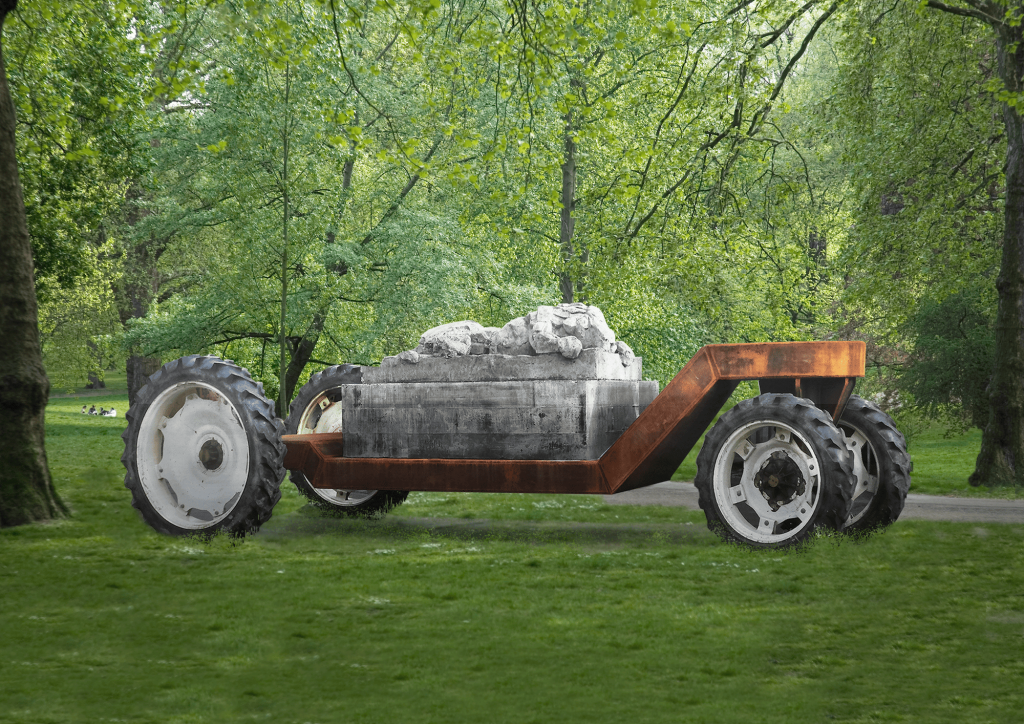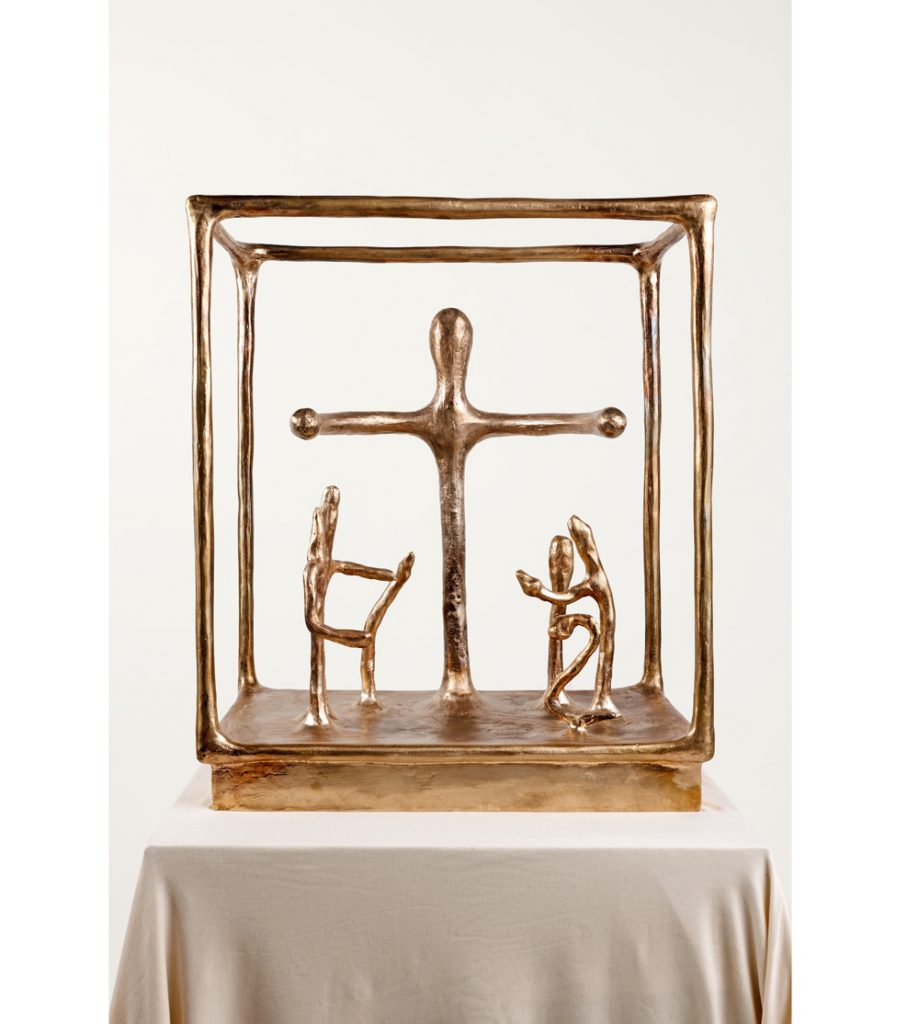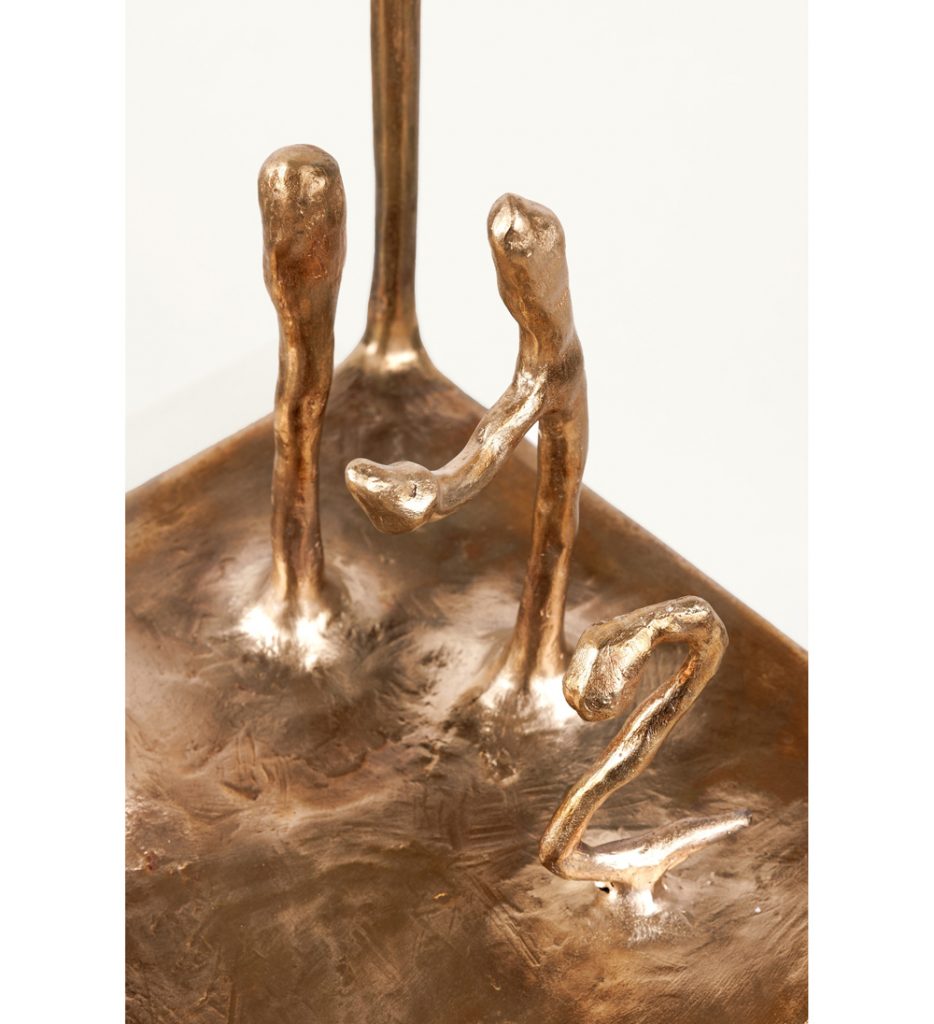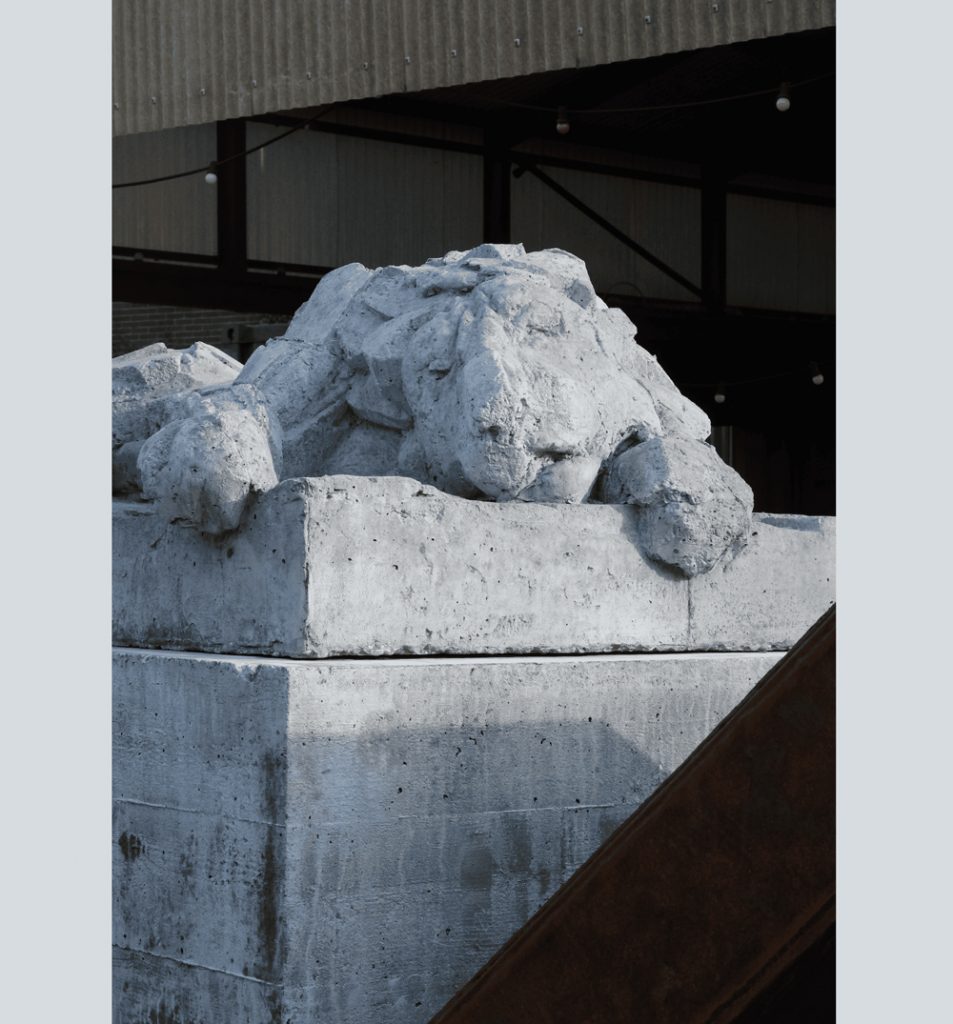Atelier Van Lieshout: A Monument to the Forgotten Artist
Atelier Van Lieshout (AVL) is known for monumental sculptures that merge art, architecture, and social research, balancing a playful yet confrontational tone. The work explores power, autonomy, and the role of the artist in a society where visibility and recognition are never guaranteed. Since 1995, Joep van Lieshout has worked under the name Atelier Van Lieshout, a deliberate choice to challenge the classical myth of the individual artist. At Art Rotterdam 2025, in collaboration with Galerie Ron Mandos, AVL presents the Tomb of the Unknown Artist (2024) in Sculpture Park, an homage to the many artists who have remained in the shadows of art history.

Tomb of the Unknown Artist: A Tragedy of Unrecognised Love
A concrete tomb rests on a gun carriage, the undercarriage of a cannon traditionally used to transport the coffins of generals, emperors, and heads of state to their final resting place. Once a symbol of state power and heroism, the gun carriage took on a ceremonial role in state funerals, marking national mourning on a grand scale. In many traditions, it is not a final resting place but merely a temporary means of transport to a grave or mausoleum. Here, it no longer carries a statesman but a monument to the forgotten artist. It is a symbolic transition between life and death, between oblivion and recognition.
Atop the tomb lies a bronze lion, still, perhaps asleep, perhaps lifeless. “That lion is a symbol of strength and perseverance,” says Joep van Lieshout. “The king of the animal kingdom sleeps, or dies, but could also wake up and move on.”

The work is both a monument and a commentary on the unpredictability of recognition. “Artists often lead incredibly tough lives,” says Van Lieshout. “I know so many people who dedicate their entire lives to creating beautiful things, only to be in the wrong place at the wrong time.” Some are later rediscovered; others disappear entirely. He calls it "a tragedy of unrecognised love." The work carries a humorous undertone while being deeply serious at the same time. “Humour makes serious messages easier to digest,” he adds with a smile.
On the side of the sculpture, there is an opening, an alcove reminiscent of an ossuary, a place where human remains are stored. “We looked at ossuaries as a source of inspiration for this monument,” says Van Lieshout. “It is a sculpture that remains open to what is yet to come.” In the future, the bones and ashes of unknown artists could be placed here. It is not a closed monument but a space that can literally be filled with the physical remains of those who never received recognition.

Protected, Forgotten, Almighty?
Alongside the Tomb of the Unknown Artist, Atelier Van Lieshout presents three other sculptures at Art Rotterdam, each exploring, in its own way, the tension between protection, power, and erasure.
Tree of Life (2016) is a tree standing over three metres tall, bearing human-shaped fruit in various stages of ripeness. “It can be a representation of life and fertility, but just as much of violence and disappearance,” says Van Lieshout.
Maria’s Cloak (2023) questions who receives protection and who is left outside. Maria’s cloak does not offer automatic safety.
Omnipotent (2023) plays with authority and submission. “Omnipotent is another word for the Almighty,” says Van Lieshout. The sculpture depicts a hand whose meaning shifts depending on its positioning. “You can place it upright, and it becomes a stop sign. Turn it with the palm facing up, and suddenly, it becomes the begging hand of an artist.”

A Floral Tribute at the Monument
On 27 March 2025 at 19:00, a symbolic flower-laying ceremony will take place at the Tomb of the Unknown Artist (2024). Visitors are invited to bring flowers and lay them at the monument, a final tribute to the artists who remained invisible during their lifetimes. Joep van Lieshout will give a short speech about the work and its broader context within Art Rotterdam.
Is it a comic or tragic gesture? It seems to carry the same ambiguity as the lion resting atop the tomb.
Written by Emily Van Driessen


